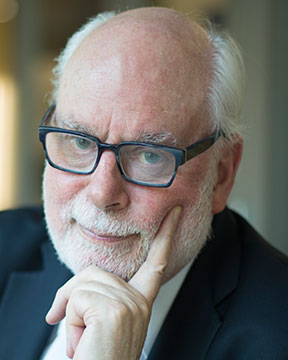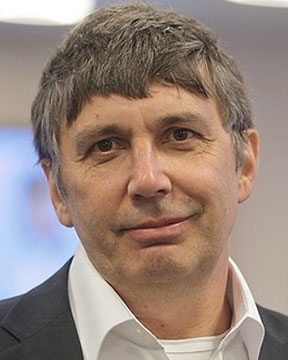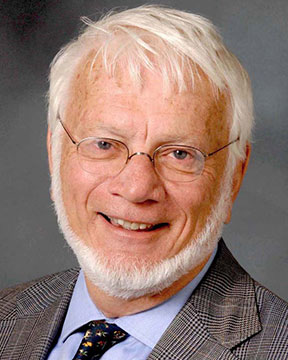ORALS
SESSION: ManufacturingMonPM3-R4
Metal Forming / Metal Removal Processing / Non-Conventional Techniques – I | Mamalis International Symposium on Advanced Manufacturing of Advanced Materials and Structures with Sustainable Industrial Applications |
| Mon Nov, 5 2018 / Room: Sao Conrado (50/2nd) | |
| Session Chairs: Raul S. Turmanidze; Session Monitor: TBA |
17:40: [ManufacturingMonPM313]
Synthesis of ZnSe Films by Electrochemical Deposition for Assembly of Photo-transforming Heterostructures Dmitri S.
Sofronov
1 ;
Athanasios G.
Mamalis2 ; Vadym V.
Starikov
3 ; E.m.
Sofronova
1 ; E.a.
Vaksler
1 ; P.v.
Mateychenko
1 ; Sergiy N.
Lavrynenko
4 ;
1SSI "Institute for Single Crystals" of NAS of Ukraine, Kharkiv, Ukraine;
2PC-NAE, Demokritos National Center for Scientific Research, Athens, Greece;
3National Technical University - Kharkov Polytechnic Institute, Kharkiv, Ukraine;
4Kharkov Polytechnic Institute, Kharkov, Ukraine;
Paper Id: 170
[Abstract] The zinc selenide films were synthesized using an electrochemical method in alkaline electrolyte. The influence of deposition options (zinc ions concentration, cathodic current density and electrolysis duration) on ZnSe films formation is discussed. It is shown that the increase of film thickness and its porosity is observed at increase of current density and zinc ions concentration in electrolyte. The most compact films are formed when the zinc concentration in the electrolyte is less than 0.05 M and the current density is not higher than 35 mA/cm<sup>2</sup>. The obtained ZnSe film had p-type conductivity and a resistivity of 10<sup>5</sup>-10<sup>6</sup> Ohm·m. It was synthesized heterostructure ZnS/ZnSe/Ni including the p-n transition. The parameters of the diode heterostructure were determined by the dark IV-characteristic.
SESSION: ManufacturingTueAM-R4
Non-Ferrous Advanced Materials from Macro- to Nanoscale – I | Mamalis International Symposium on Advanced Manufacturing of Advanced Materials and Structures with Sustainable Industrial Applications |
| Tue Nov, 6 2018 / Room: Sao Conrado (50/2nd) | |
| Session Chairs: Mustafa Guden; Session Monitor: TBA |
12:10: [ManufacturingTueAM03]
Structure and Optical Properties of Nanocomposite Carbon Films Obtained from Accelerated C60 Ion Flows Svetlana
Rudchenko
1 ; Vladimir Egorovich
Pukha
1 ; Vadym V.
Starikov
1 ;
Athanasios G.
Mamalis2 ; Sergiy N.
Lavrynenko
3 ;
1National Technical University - Kharkov Polytechnic Institute, Kharkiv, Ukraine;
2PC-NAE, Demokritos National Center for Scientific Research, Athens, Greece;
3Kharkov Polytechnic Institute, Kharkov, Ukraine;
Paper Id: 151
[Abstract] The results of structural and optical investigations of thin carbon films deposited from the mass-separated beam of accelerated C60 ions with energy of 5 keV are presented. The substrate temperature ranged from 100°C to 400°C. It was established that change of the TS from 100°C to 400°C leads to the consecutive formation of diamond-like carbon (DLC) films with amorphous state and superhard nanocomposites consisting nanographite structures (1-2 nm) surrounded by a diamond-like amorphous matrix. For amorphous films the band gap (Eg) was in the range of 1.2 - 1.4 eV. For nanocomposite films on optical absorption spectra, there are two energy components: one with a narrow Eg = 1 eV, which is associated with three-dimensional nanocrystals of graphite, and the other - with a wide optical gap (Eg =3,45-3,55 eV) that corresponds to the diamond-like amorphous matrix of nanocomposite. According to the results of scanning tunneling microscopy (STM) and tunnel spectroscopy (TS), the size of graphite nanocrystals is about 1-2 nm and an amorphous shell around the graphite nanocrystals had a thickness of about 1.5 nm. The graphite component had n-type conductivity and an amorphous component had p-type conductivity. The electrical conductivity of such semiconductor nanocomposite was 103 S/m that to 6 orders higher compared to the DLC film in the amorphous state.
References:
[1] Robertson J. Diamond-like amorphous carbon // Materials science and Engineering. 2002. R37. Р.129-281.
[2] Robertson J. and O'Reilly E.P. Electronic and atomic structure of amorphous carbon // Phys. Rev. B. 1987. Vol.35, 6. P.2946-2957
[3] Robertson J. Electronic and atomic structure of diamond-like carbon // Semicond. Sci. Technol. 2003. Vol.18. Р.S12-S19.
[4] Tay B.K. Optical properties of tetrahedral amorphous carbon films determined by spectroscopic ellipsometry / Tay B.K., Shi X., Cheah L.K., Flynn D.I. // Thin Solid Films. 1997. Vol.308. Р.268-272.
[5] Teo K.B.K. Highest optical gap tetrahedral amorphous carbon / Teo K.B.K., Ferrari A.C., Fanchini G., Rodil S.E., Yuan J., Tsai J.T.H., Laurenti E., Tagliaferro A., Robertson J., Milne W.I. // Diamond and Related Materials. 2002. 11. P.1086-1090.
SESSION: ManufacturingWedAM-R4
Transport / Crashworthiness of Vehicles: Passive and Active Safety | Mamalis International Symposium on Advanced Manufacturing of Advanced Materials and Structures with Sustainable Industrial Applications |
| Wed Nov, 7 2018 / Room: Sao Conrado (50/2nd) | |
| Session Chairs: Ryuichi Tomoshige; Session Monitor: TBA |
11:45: [ManufacturingWedAM02] Keynote
A Composite Nanostructured Material Based on Alumina for Use in an Airocraft Gas Turbine Engine Athanasios G.
Mamalis1 ; Sergiy N.
Lavrynenko
2 ;
Edwin
Gevorkyan3 ; Vasily
Dutka
4 ; Maxim
Kislitsa
5 ;
1PC-NAE, Demokritos National Center for Scientific Research, Athens, Greece;
2Kharkov Polytechnic Institute, Kharkov, Ukraine;
3Cermet-Ukraine Ltd. Science and Production Company, Kharkiv, Ukraine;
4Institute for Superhard Materials of the National Academy of Sciences of Ukraine, Kiev, Ukraine;
5Ukrainian State University of Railway Transport, Kharkiv, Ukraine;
Paper Id: 218
[Abstract] The structure and properties of composite materials, for gas turbine engines based on nanopowders alumina, zirconium dioxide, and tungsten carbide, in the process of hot pressing by electroconsolidation are investigated. Research results on the influence of structure parameters and phase composition on the microstructure, and physical and mechanical properties of alumina composites obtained by electrosparking (electroconsolidation) are described. It has been established that the formation of a composite structure, due to the introduction of nanopowders of alumina and zirconium dioxide into the nanopowder of tungsten carbide, makes it possible to increase some of the physico-mechanical properties of the obtained composite materials.



















